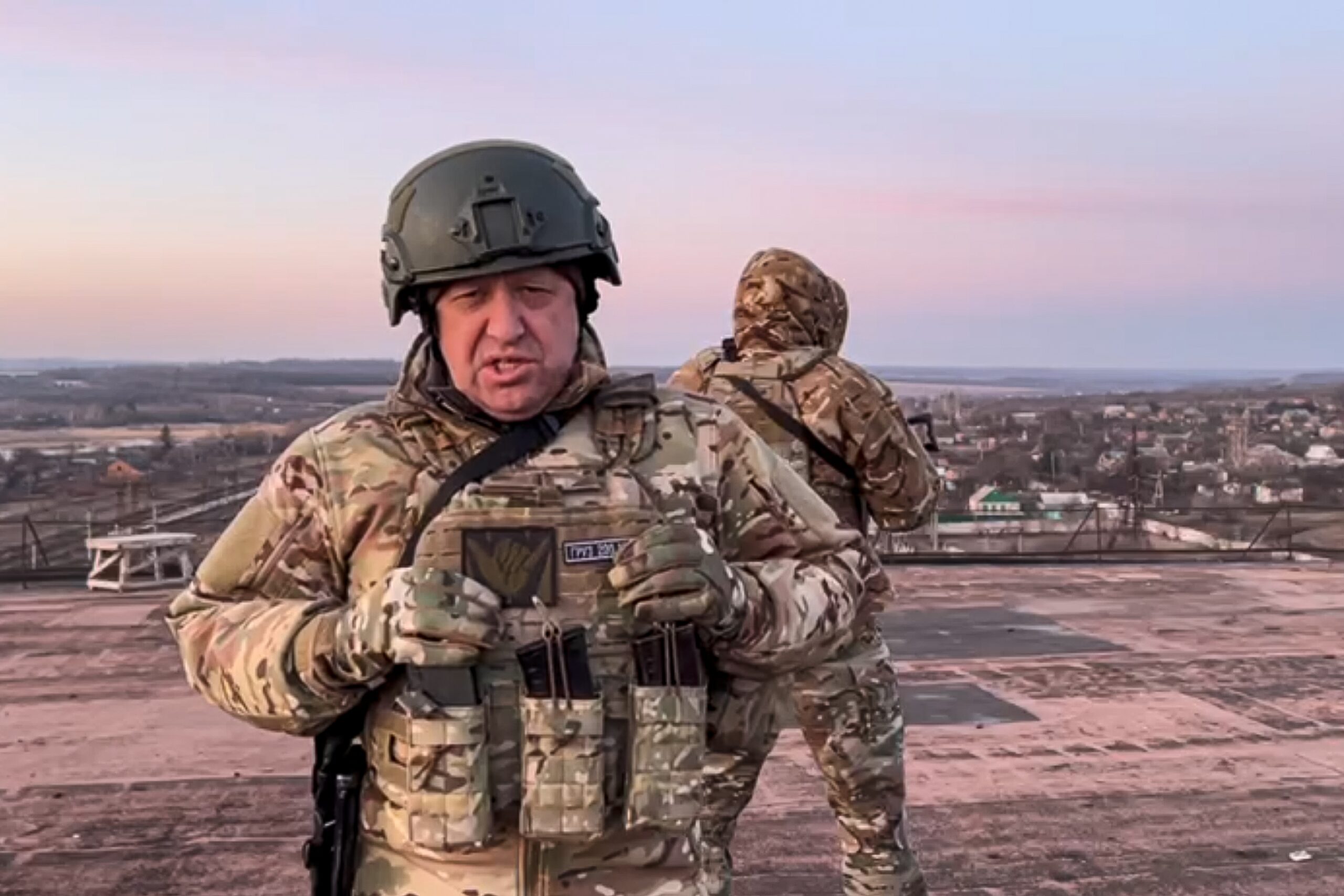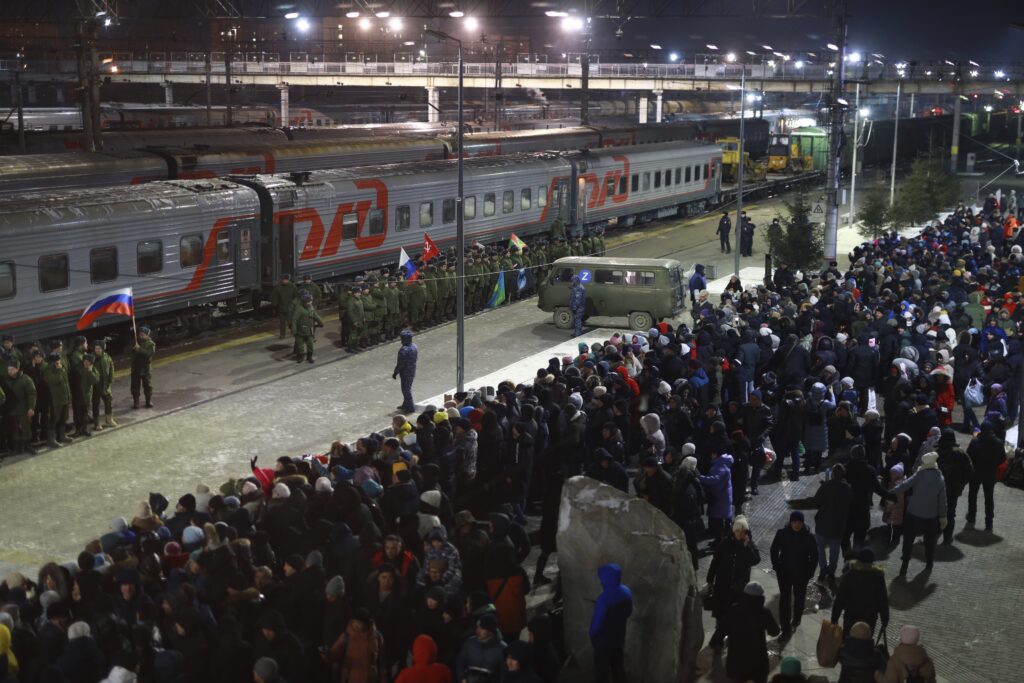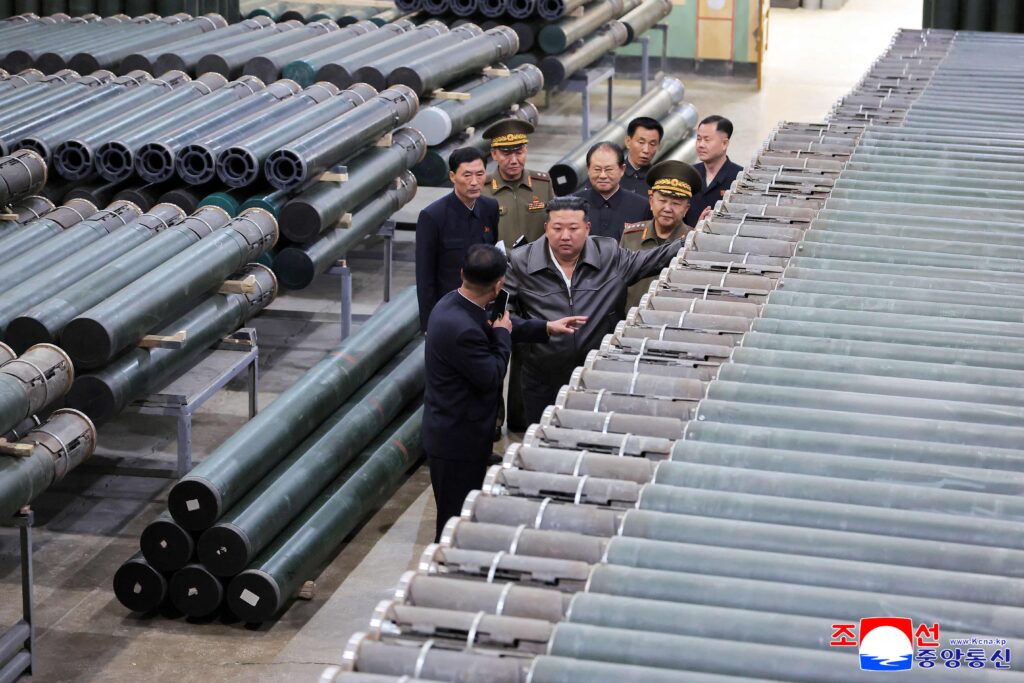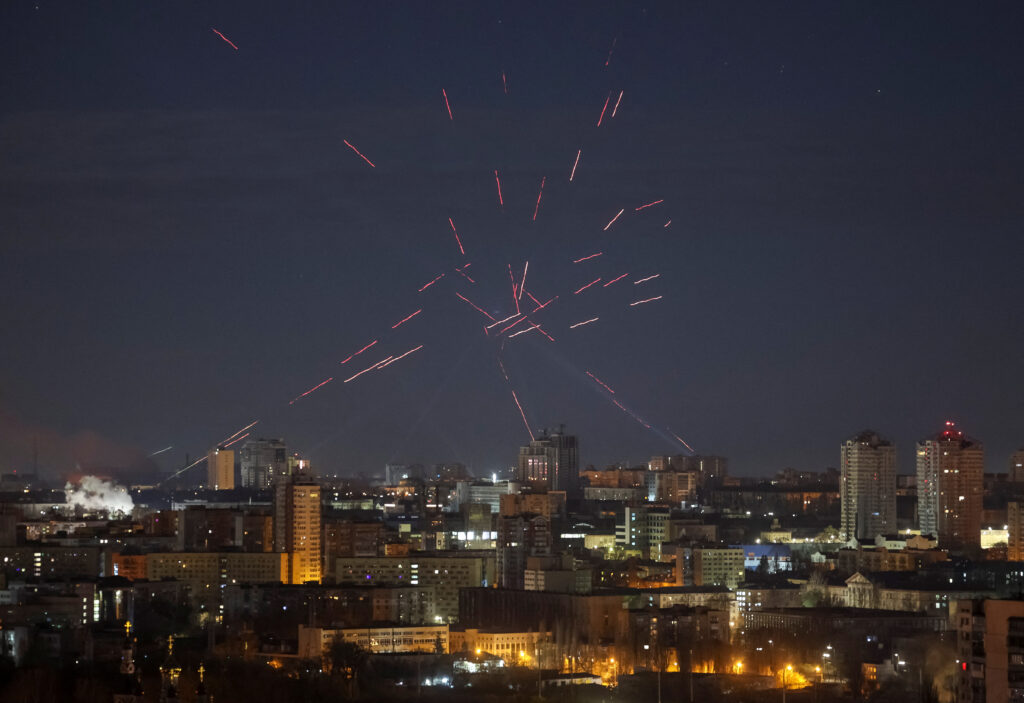One of the principles of international human rights law is that the treament of prisoners stays politically neutral. Yet in times of conflict, a state’s war effort can push prisons to carry some of the burden; this can include reorientating prison industries to meet military needs, packing prisons with conscientious objectors, or emptying them to house conscripts during training. More controversially in Russia’s invasion of Ukraine, former prisoners with unexpunged sentences have also been recruited into the armed forces. For its part, the state should treat prisoners like any other vulnerable citizen in time of war, taking measures to protect them from the war’s consequences, especially in prisons on or near the battlefield. What no state should ever do is recruit prisoners to fight on the frontline.
In 20th century Europe, Nazi Germany was notorious for the Dirlewanger Brigade, comprised of inmates of Nazi concentration camps and prisons, and the USSR took this further after 1941, recruiting 1.2 million GULAG prisoners into the army. This is also what is happening in the Russo-Ukrainian war. I want, immediately, to dismiss the idea that the recruitment of prisoners to fight in a war can ever be voluntary. As was established at the Nuremberg trials in relation to the medical experimentation on prisoners, an individual giving consent should be so situated as to be able to exercise free power of choice, without the intervention of any element of force, fraud, deceit, duress, overreaching, or any other ulterior form of constraint or coercion. They should also have sufficient knowledge and comprehension of what awaits them to be able to make an informed decision. On this last point, Evgenii Prigozhin might well insist that he tells the prisoners forced to assemble on the parade grounds of correctional colonies, that death on the battlefield and execution for desertion could be their fate; but this is a defence unlikely to hold water with judges in the Hague.
I am not going to rehearse the pure evil of the methods used on the battlefield by the Wagner forces; so much has already been written about that already on social media and Telegram channels. The question I wish to focus on is the inadvertent ‘fake news’ circulating in the media about the scale of the recruitment of prisoners to fight against Ukraine.
What the media has claimed
Wagner paramilitaries have been involved in Putin’s war right from the beginning; but speculation that they included prisoners recruited from Russia’s penitentiaries surfaced in the summer 2022 following the circulation of a video showing Prigozhin offering prisoners freedom in return for six-months service as infantrymen with the Wagner PMC. In the weeks that followed, the number of prisoners involved became a matter of intense speculation. Initial estimates diverged widely; one ‘US official’, without revealing his source, gave the modest figure of 1,500 as Wagner’s goal, the media outlet Vazhnye Istorii gave a precise number of 5786, and Olga Romanova in mid-September gave it 11 000. But it was the publication by the Russian Prison Service (FSIN) of the size of the prison population for the 1st November 2022 and then again for 1st January 2023, that has led to a consensus emerging of the number of prisoners apparently recruited by Wagner. I write ‘apparently’ because the estimates are based on a faulty methodology that appears initially to have originated in an article by Natalya Taubina, Director of Obshchestvennyi Verdict, who mistook the decline in the total prisoner population for the month of October 2022 (13, 735) as the number of prisoners released during the month, concluding that «a significant portion of this outflow (ottok) relates to recruitment in colonies.» Taubina’s mistake should have been picked up by other commentators; instead, it was repeated and circulated widely in Telegram channels, reproduced in foreign media and, shockingly, reported in a twitter feed by the UK Ministry of Defence. By the time Prigozhin announced on February 9th 2023 that he had brought the ‘process of prisoner recruitment’ to an end, there was general agreement that a total of 40 000 — 50 000 prisoners had been recruited between August 2022 and 1st January 2023, that this recruitment had peaked in autumn 2022 when c.10,000 prisoners per month were being recruited, and that there was a tailing off in the last two months of 2022. The analysis in a Siberia Free Radio report on the occasion of FSIN’s posting of total prison population for 1st January 2023 was typical: «From the updated data, it follows that from November to January, there were 6,000 fewer prisoners in the colonies — about the same pace as they were released earlier [before the war]. For comparison, in September and October, there were 23,000 fewer prisoners in the colonies, which was explained by the active recruitment of prisoners to participate in the war in Ukraine.»
This sorry episode in the history of journalism speaks to the frustrations during times of war about the absence of ‘hard facts’. However, it beggars belief that no-one stopped to question the figures’ accuracy and how they had been derived. Instead, the unlikely estimates provided the basis for speculation both about the future course of the war and the changing tactics of the Russian forces in the field. The twitter thread, apparently emanating from the UK Ministry of Defence, assessed the falloff in recruitment after November 2022 as signalling an end to ‘the human-wave style assaults’ in key sectors of the front and as forcing the military to choose between scaling back their goals and launching a new mobilisation. CNN also concluded the figures showed that, ‘the campaign was no longer delivering.’ Both Russian and Western media attributed the slowdown to reports of large numbers of death among convicts filtering back into colonies (although, I find this explanation reveals a tenuous understanding of how power works in Russian prisons), to competition between factions in the Russian elite and to Prigozhin falling out of favour with Putin.
These far-reaching conclusions about Russia’s war plan underline the importance of distinguishing between fact and fantasy. We do know that prisoners have been recruited straight from prisons to fight with Wagner and that they have been deeply involved in the fighting in the region of Bakhmut and Soledar. But we cannot know even approximately the numbers involved using the figures FSIN puts in the public domain. I explain why below.
Stocks and flows
Changes in the total number of prisoners is a common measure of how a prison system performs. Generally, a decline in prisoner numbers is taken as evidence of a criminal justice system moving in a humane direction, while the opposite is assumed when numbers rise. The reasons for upward and downward trends are complex; the total number of people in prison at any time is the result of large number of variables working together or in opposition to one another — what offences are criminalized, how often pre-trial detention is used as a preventive measure, court sentencing practices, the availability of alternatives to incarceration, the average length of custodial sentences, parole rates and various external events affecting prisoner numbers like mass amnesties, war, revolution, repression, environmental catastrophes, and epidemics. Russia is proud of having halved its prisoner population in the past two decades from over one million at the turn of the century to 433 006 on 1st January 2023. Prisoner population statistics giving a snapshot of the total prisoner population at a particular point in time are referred to using the demographers’ vocabulary, as ‘stocks’.
While population stocks measure the accumulated sum of all the arrivals and departures of prisoners in a prison system up to the census date, the actual number arriving and departing over any given period are referred to as ‘flows’. In Russia, as in other jurisdictions, prisoners flow into and out of prisons at various stages of the criminal justice process. ‘Inflow’ consists of people remanded into custody prior to trial plus those with unexpunged sentences but who are returned to custody for breaking the conditions of their release. ‘Outflow’ is made up of a combination of remand prisoners transferred to non-custodial preventive measures, such as house arrest or bail; prisoners who at trial receive a non-custodial punishment, a suspended prison sentence or are found not guilty; convicted prisoners released at the end of their sentence, paroled or transferred to a non-custodial punishment; prisoners freed because of case review, annulment or ill-health (aktirovka), and prisoners who escape or die in custody. Included in flow figures are individuals who over a certain time period circulate through the revolving door between prison and freedom, sometimes more than once during an accounting period. Stocks and flows are different units of measurement — the former static and latter, dynamic — and they are incommensurable, although related. It is the outflow figures that are needed to estimate the Wagner recruitment numbers.
For quite a few years, Russia’s FSIN has been publishing stock figures online, disaggregated by types of facility and month. It does not publish flow data. However, these data are available for 2020 because in that year the Council of Europe produced a comparative study of flows in the prison systems of all member states, Russia included. The study showed how during 2020, the prisoner inflow into FSIN facilities of all types was 376 144 and the outflow, 234 745. This gave a prisoner turnover rate of 28.7%, which is low compared with the European average, but explains why the inflow of prisoners in Russian prisons in that year was greater than the outflow, at the same time as the stock of prisoners declined by -8.6%. The 2020 data give a monthly average release rate from all penal institutions of just under 20 000. This is the figure against which any increased outflow due to an extraneous event in any month, such as releases to join Wagner PMC, should be compared. But even if FSIN were suddenly to start publishing flow data, we would be left the question of how far any figures FSIN puts in the public domain can be trusted.
Can we believe FSIN statistics anyway?
Against the backdrop of the amount of falsification in the media about the Russo-Ukraine war and a history of the falsification of prison statistics dating back to the gulag, it is surprising how willing commentators have been to accept as genuine the figures recently posted on the FSIN website. Even if we assume that FSIN’s statistics are ‘real’, we need to remember that the agency has myriad ways of manipulating data to tell a story that meets the needs of the day. The most obvious and effective technique is simply to withhold inconvenient data of which the failure to reveal the number of releases is a long-standing case in point. Since 24th February the data on FSIN’s website, postings have become more erratic and less detailed; whereas, in the past, the total number of prisoners held in the different types of pre-trial and post-conviction institutions were posted, these have disappeared from the most recent figures.
In managing the current tension, the prison service faces a dilemma between showing too great or too modest a decline in prison numbers. To cook the books, FSIN has various additional weapons in its cupboard. One of its most tried and tested is the ‘re-categorization’ of offender groups, to encourage a favoured interpretation. For example, we do not know what classificatory scheme FSIN is using for prisoners-of-war and other captives of the war held in FSIN facilities in the Russian Federation. Nor do we know whether all people being held in facilities in the occupied territories, now incorporated into the Russian Federation, have been added to FSIN data. There is also a question mark over the classificatory status of people transferred to sentences of «forced labour as an alternative to deprivation of freedom». They should be excluded from prisoner totals but, interestingly, in the January 1st 2023, FSIN posting of ‘updated statistics’, ‘correctional centres’ (ispravitel’nie tsentry) are included in the list of facilities for housing prisoners. Then, there is the means of moderating prisoner numbers by manipulating the technique of aktirovka — the release of prisoners on grounds of ill health, which was used in the gulag by camp commanders to suppress the mortality statistics.
There is much about its current activities that FSIN clearly wants kept secret — the Wagner recruitment, the impact of COVID-19 in prisons, the fate of prisoners-of-war and civilians captured in the field, the scale of the repression, the absence of a probation service and the failure to implement alternative sanctions — all of which will have affected stocks and flows in the prison estate. These impacts are being felt at a time when FSIN is also keen to maintain the myth that the Russian Federation’s exit from the Council of Europe has not interrupted its journey towards developing a more humane prison system. It means that FSIN is having to keep an especially careful watch on the data it releases.
I suspect that the FSIN was caught off guard by how the opposition media interpreted the changes in the prisoner stocks in the autumn of 2022; quite justifiably it could not have been expecting this. Instead of the furore about Wagner, it presumably was offering up the figures of a decline in the number of prisoners as proof of how well it is doing in humanising the prison system. As for the question of how many prisoners have actually been recruited for Wagner — this is unknown. And so it will remain for at least the next 75 years until such time as the archives are opened to historians of the Russo-Ukrainian war. Or, in the best-case scenario, until there is a liberal government installed in Moscow and the perpetrators for the crime of forcibly recruiting prisoners to fight Putin’s war is underway in Strasbourg or The Hague.










